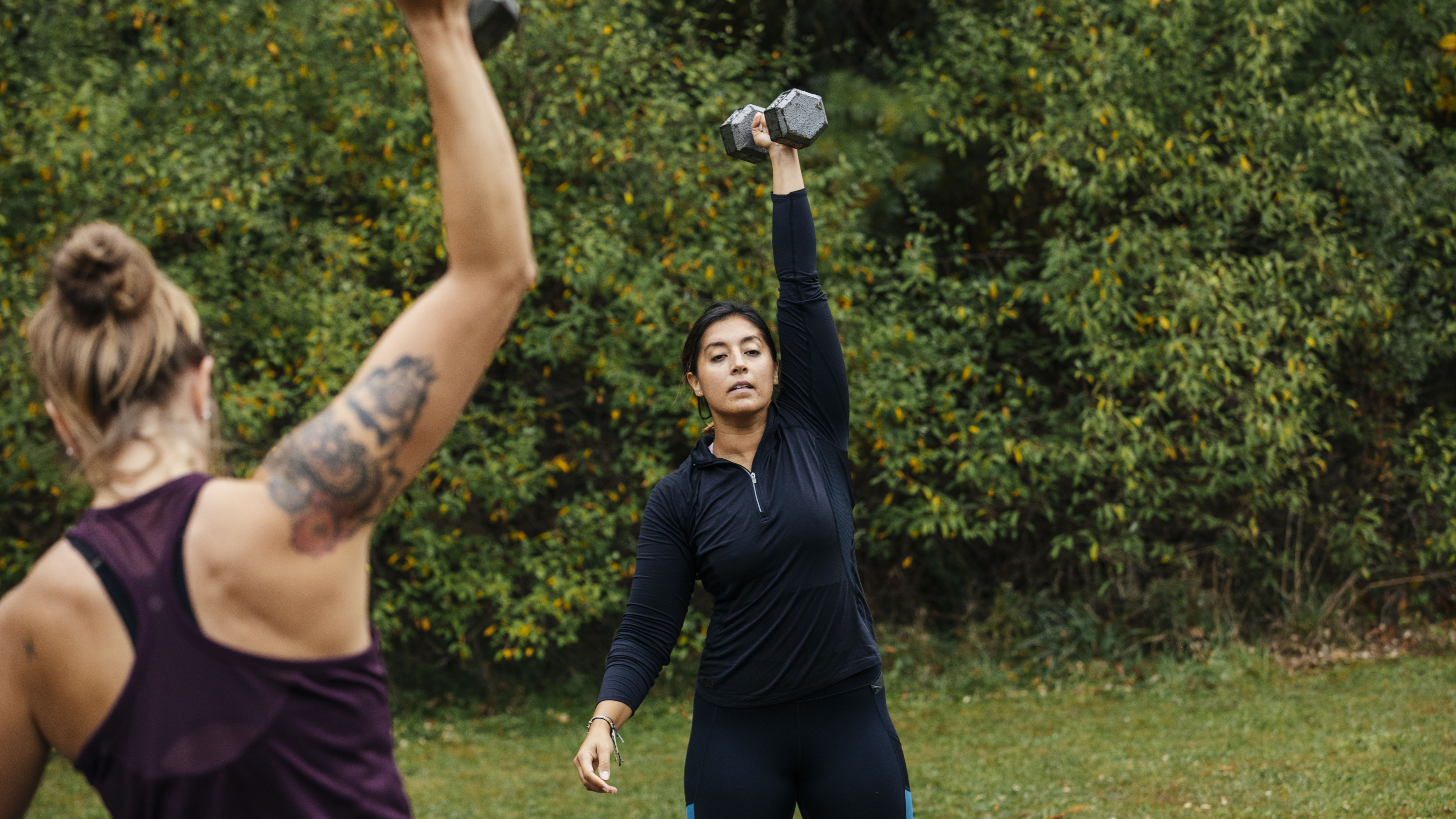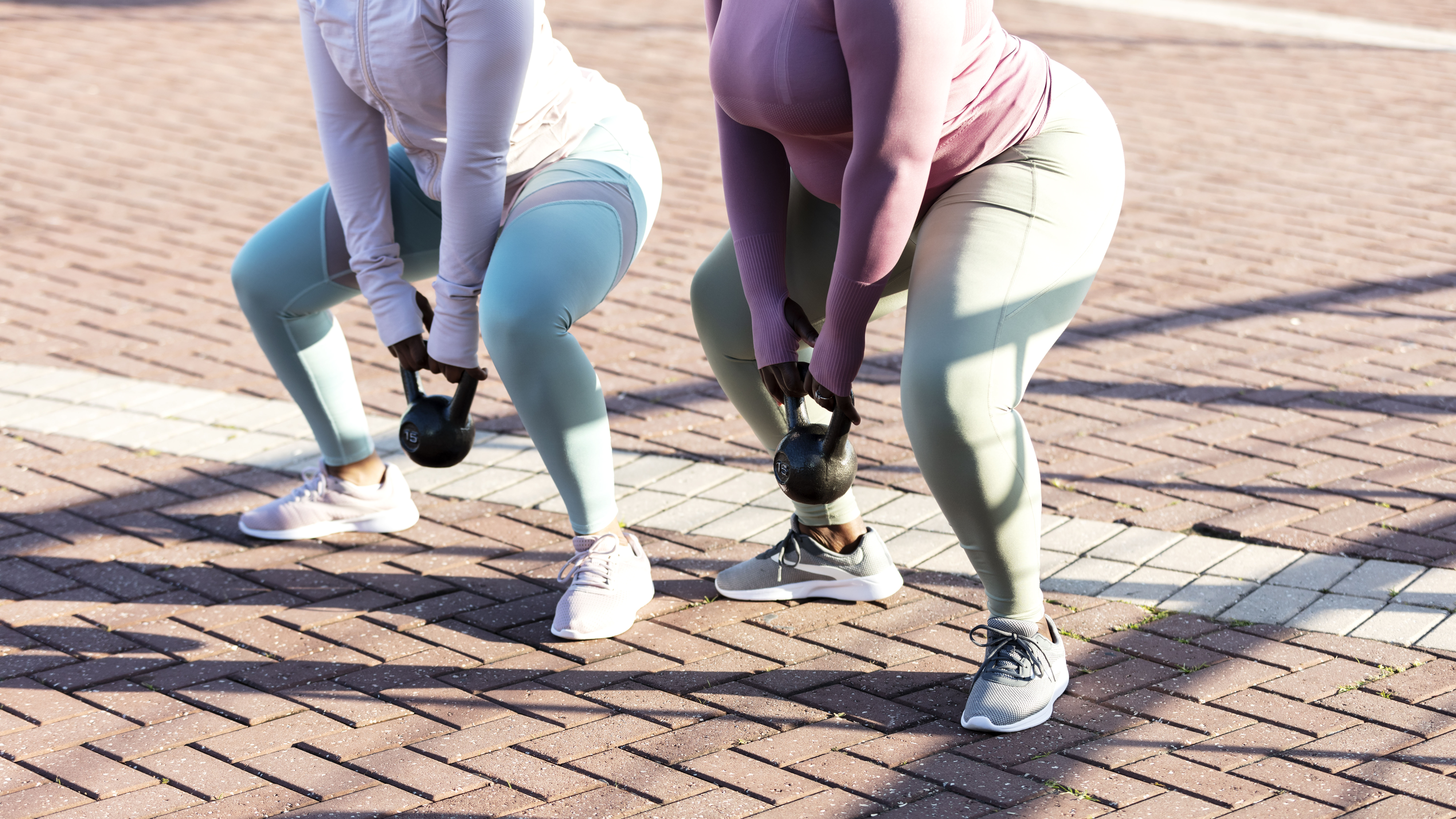What is hypertrophy?
An exercise physiologist explains what is hypertrophy training – and why we should all be doing it

What is hypertrophy? If you’ve spent much time in a gym or around people steeped in the world of fitness, the chances are you’ve heard the term hypertrophy, or hypertrophy training. However, while we might often hear about it, many people remain unsure as to what hypertrophy is.
Hypertrophy, which refers to muscle growth, is one of the primary goals of strength training workouts, and can be beneficial to your body composition and overall health. (If you're trying to squeeze in more strength training at home, have a look through our round up of the best adjustable dumbbells)
To learn more about hypertrophy and how to exercise if your goal is to build muscle mass, we spoke to Bianca Grover, an exercise physiologist, medical exercise specialist, personal trainer and founder of Bianca Grover Fitness.
What Is hypertrophy?

There are two primary types of hypertrophy: myofibrillar hypertrophy and sarcoplasmic hypertrophy. Myofibrillar hypertrophy involves growth of contractile elements of a muscle fiber, so this type of hypertrophy helps increase your strength and speed as an athlete because your muscles can contract more forcefully.
Sarcoplasmic hypertrophy refers to growth of the non-contractile elements of a muscle fiber, like the energy-generating organelles and glycogen storage sites. This type of hypertrophy yields improvements in energy storage and endurance.
If you're new to hypertrophy, why not learn weightlifting for beginners or try some of the best exercises for shoulders?
Types of hypertrophy
When we think about strength training, strength exercise, or weight training, there can be a few muscular goals: increasing muscular strength, increasing muscular endurance, and increasing muscular size or mass. These goals can be thought of as getting stronger or being able to lift more weight, improving your stamina, and building muscle mass.
Get the world’s most fascinating discoveries delivered straight to your inbox.
This last goal how to gain muscle and build muscle mass – is what hypertrophy is all about.
“Hypertrophy refers to the growth of muscle cells – not to be confused with transient hypertrophy, which is when muscles appear larger after a workout. That is a temporary increase, commonly referred to as the ‘pump’,” says Grover.
True muscle hypertrophy involves the enlargement of muscles due to an increase in the size and number of muscle fibers from consistent training, not a short-term swelling of muscle tissue immediately after a workout.
How can you train for hypertrophy?

Grover says that physiological changes, such as muscle growth, occur when the body is put under a significant amount of stress or load, which is ultimately what we are doing when lifting weights or doing resistance training workouts.
“When exercising for hypertrophy, generally, [you want to] increase the weight and reduce the amount of repetitions. When talking about the weight used to exercise, also known as the load, fitness professionals measure it as a percentage of your one rep max (1 RM),” says Grover. “For example, if you can squat 100 pounds one time, 50% of this one rep max would be 50 pounds.”
Grover says the best method for achieving hypertrophy is by using at least 75% of your one-rep max. “This is a resistance that usually allows you to complete eight to 10 reps at a time, which is recommended for hypertrophy,” says Grover, who is referencing the fact that most exercise professionals and researchers have found that 3-5 sets of 8-10 reps of an exercise using 75% of your 1RM is ideal for building muscle.
“By exercising at 75% of your one rep max, you are applying this stress while still allowing for multiple repetitions,” says Grover. “This causes micro tears in your muscles that in turn get repaired into thicker, stronger structures using protein.”
Grover says that another efficient way to maximize hypertrophy is by focusing on the eccentric or lowering phase of an exercise. The eccentric phase in a biceps curl, for example, refers to the portion of the exercise where you lower the weight back down and straighten your elbows. For reference, the lifting phase when the muscles shorten when they contract is referred to as the concentric phase.
- Related: Does protein build muscle?
How long does it take to see results?
Muscle growth, even when done properly, is a slow game. According to Grover, “On average, you can expect to see an increase of 0.5 pounds per week. This is, of course, if you include an appropriate amount of calories and protein.”
What are the benefits of hypertrophy training?

Building muscle mass isn’t just a matter of looking better or achieving the physique you’re after. Hypertrophy also increases your metabolic rate.
Muscle tissue is more metabolically active than fat tissue, which is why your basal metabolic rate increases and you burn more calories even at rest when you gain muscle and lose fat.
According to research in the journal Obesity, one pound of muscle burns about six calories at rest while a pound of fat burns two calories. Therefore, if you gain five pounds of muscle and lose five pounds of fat, your total body weight will remain unchanged, but your basal metabolic rate will increase by 20 calories a day.
Although this is rather negligible, it’s important to keep in mind several things: the more muscle you gain, the more significant the metabolic boost will be and this only refers to increases as rest.
When you’re exercising, the metabolic rate of muscle increases precipitously, whereas fat continues to be minimally active. The more muscle tissue you build, the more calories you’ll burn when you run or work out.
Therefore, depending on the duration and intensity of your workouts, the total number of calories you burn in a day can increase substantially when your percentage of lean body mass increases and your body fat percentage decreases.
Additionally, building muscle increases your bone density. When larger, stronger muscles contract, they pull more forcefully on the bones. This signals your body to deposit more minerals and strengthen the structure of your bones, and to create new bone cells.
What are the drawbacks of hypertrophy training?
Grover says that if you have a complex medical background (recent surgery, orthopedic issues etc), hypertrophy training could be dangerous if done without professional supervision. “It is common for intense resistance training to cause elevated liver enzyme numbers due to the damage caused by micro tears in the tissue,” says Grover.
Consult your doctor before engaging in a workout program or work with a certified fitness professional if you have any concerns.
Who should do hypertrophy training?
The good news is that aside from those with current or significant medical issues who should seek medical advice prior to engaging in hypertrophy training, Grover says that anyone who is interested in improving their health and fitness should aim for some level of hypertrophy.
“Individuals who could benefit the most from hypertrophy training include overweight individuals for metabolic benefits and those diagnosed with osteopenia or osteoporosis,” says Grover. “Weight-bearing activities help improve bone density, thus preventing the onset of osteopenia or even prevent the osteopenia to osteoporosis transition.”
The takeaway: Hypertrophy

Grover says that although many women are concerned that lifting weights will cause them to bulk up or get 'big,' this is not true. “Due to lower testosterone levels, it is more difficult for women to get ‘ripped’ than it is for men. It is a long, specific process that takes well-planned workouts and nutrition,” she says. “Women should absolutely weight lift, especially leading into menopause and after because of the high risk of decreased bone density.”
Amber Sayer is a fitness, nutrition, and wellness writer and editor, and contributes to several fitness, health, and running websites and publications. She holds two masters degrees—one in exercise science and one in prosthetics and orthotics. As a certified personal trainer and running coach for 12 years, Amber enjoys staying active and helping others do so as well. In her free time, Amber likes running, cycling, cooking, spending time outside, and tackling any type of puzzle.
 Live Science Plus
Live Science Plus






